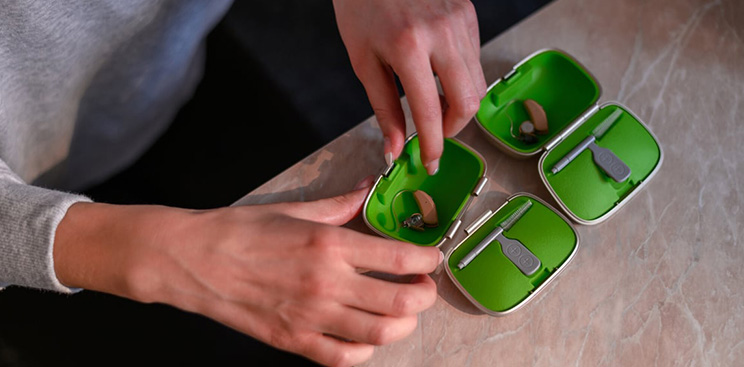
According to CDC data, 7.1% of adults who are over 45 have used a hearing aid.
Using a hearing aid is nothing to be ashamed of, but there can be issues with using one.
Keep reading to discover some of the common hearing aid problems that you might experience and what you can do about them.
1. It's Not Loud Enough
Your hearing aids are designed to help you hear, and they should work well enough that your hearing is as good as a person's hearing without hearing aids. It's not uncommon for your hearing aids to be quieter as time goes on, but there are several reasons it might not be working.
You should first check your hearing aid to see if there are any problems or blockages with the receiver tube. Sometimes earwax can get in there and naturally build up, which will make it harder for it to be loud enough.
If you have checked and there are no blockages, then the issue might be with your hearing. Over time, your hearing will naturally decline, and your hearing aid may need to be updated or adjusted to account for new hearing loss.
2. Battery Dying
It's also common for your hearing aid's batteries to die, so you always need to keep track of their battery life. There are hearing aids out there that come with disposable or rechargeable batteries.
The best solution might be to get some that are rechargeable. These are eco-friendly, but they're also easier, so you don't have to worry about finding new batteries.
If you're using traditional batteries, you'll need to replace them every time your hearing aid batteries die.
Your medical benefits and insurance could cover hearing aid batteries, so you should check to see if they'll be compensated. Your hearing aid batteries can last anywhere from a few days to two weeks, so you should plan accordingly. To help save battery life, turn them off when you're not actively using them.
3. Hearing Feedback
You might also be hearing feedback. They can pick up their own noise, especially if it's rubbing against something in your ear.
The best way to avoid that is to avoid turning your hearing aid on until you have it fully placed in your ear. If it's already in your ear and you're still hearing feedback, it could be the wrong fit.
Bring it back to your doctor to have them refit it.
4. Moisture Buildup
The moisture could be from walking through the rain, the shower, sweat, or even an extra humid day.
Your hearing aids will encounter some type of moisture, and they could slip and fall out of your ears. However, hearing aids are actually built to hold up even against moisture.
If you want some extra peace of mind, you can look for hearing aids that give you extra coating on them. To be safe, you should still take them out while showering, but getting a little bit of sweat on them won't hurt them.
5. Problems With the Earmold
When you get fitted for hearing aids, your doctor will take a mold out of your ear. This is what they use to create the hearing aid to ensure that it fits properly.
However, if they're uncomfortable or keep falling out of your ear, there may be a problem with the ear mold. To get the most out of your hearing aid, they need to be perfectly fitted to your ear.
If they're not comfortable, you may be hearing feedback, which can make it an overall unpleasant experience. Explain the situation to your doctor, and they may be able to remake them.
6. Hearing Is Distorted
Sometimes the hearing can be distorted through the hearing aids. This isn't normal; the hearing should sound like it was normally without hearing aids.
However, if the hearing is distorted, there are a few tips you can try. If you have batteries that are disposable, you should check the contacts. This is the area where the ends of the battery connect to the hearing aid.
Are the metal prongs connected to the battery? If they're corroded or damaged, they may not be getting all the power that they need from the battery in order to work. You can try replacing the battery, but you may need to get the battery connects fixed.
Another sign that the contacts are damaged is if you see faint scratches on the surface of the battery.
If the contacts are fine, then you might be using a different mode on your hearing aids. You might've switched it to a wireless setting instead of an assistive listening device, so switching it back could solve the issue.
7. Issues With Volume Control
Hearing aids need a lot of adjustments to get them set to your preferences, so you'll need to experiment with volume control.
However, you can have optimized volume control by using digital hearing aids. These hearing aids will adjust automatically to your surroundings, so you don't need to worry about not hearing something too loud or not loud enough.
8. Telephone Issues
If your hearing aid comes with accessories that can help you use something like your phone, then there is an even higher chance that you'll have a malfunction.
Using the telecoil can be challenging, and if you don't use it properly, then you could have some poor sound quality.
Fix These Hearing Aid Problems
If you're experiencing any of these hearing aid problems and can't solve them on your own, you might need some extra help.
They should be able to fix the hearing aid, or, if it can't be fixed, issue a new one.
If you're experiencing any of these hearing aid issues, contact us today!
